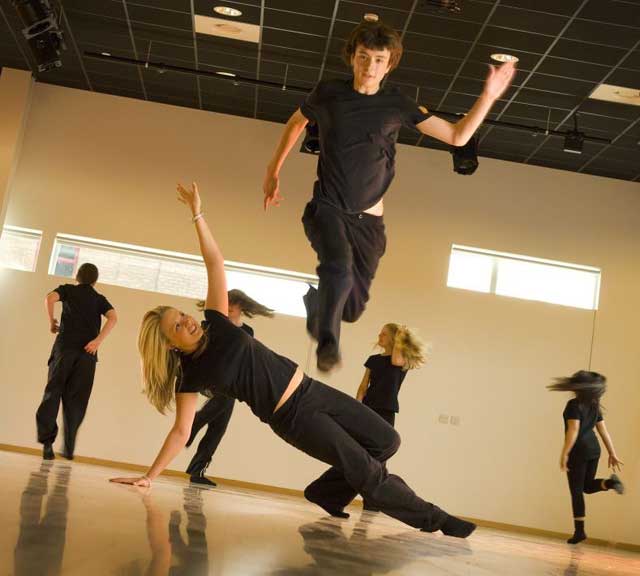Dramatic improvement: How a rebuilt school in Knowsley has transformed behaviour

Your support helps us to tell the story
From reproductive rights to climate change to Big Tech, The Independent is on the ground when the story is developing. Whether it's investigating the financials of Elon Musk's pro-Trump PAC or producing our latest documentary, 'The A Word', which shines a light on the American women fighting for reproductive rights, we know how important it is to parse out the facts from the messaging.
At such a critical moment in US history, we need reporters on the ground. Your donation allows us to keep sending journalists to speak to both sides of the story.
The Independent is trusted by Americans across the entire political spectrum. And unlike many other quality news outlets, we choose not to lock Americans out of our reporting and analysis with paywalls. We believe quality journalism should be available to everyone, paid for by those who can afford it.
Your support makes all the difference.When head teacher Ann Behan received a sizeable petition from the local community, her heart sank. Pupils hadn't been popular in the deprived Merseyside suburb of Knowsley and absenteeism was an endemic problem. "I thought, 'Oh no, here we go'," says Behan. In fact, the petition was a heartfelt and unsolicited "Thank you" from people living around the revamped school. Pupils' behaviour had dramatically improved and truants no longer roamed the streets in the same numbers. "They even said children's behaviour had improved in the evenings and weekends."
What caused such a dramatic transformation? Knowsley was one of the first local authorities to receive government funding to renew its ailing secondary schools as part of the planned £55bn Building Schools for the Future (BSF) programme. Seven secondary schools have been rebuilt, making Knowsley the first local authority to replace every institution in the borough. Gone are the piecemeal constructions of the Fifties and Sixties, with long corridors, sprawling buildings and smelly toilets, replaced by award-winning modern three-storey "centres for learning" equipped with state-of-the-art facilities.
"I know I sound gushing, but it really is absolutely wonderful," says Behan, who last June presided over the move into the Halewood Centre for Learning – one of the first new schools to open as part of the BSF project.
Specialising in performing arts, Halewood is unrecognisable in its new guise. A square block with a vast atrium, the building is filled with natural light. Glass panels flank the central space, dotted with blocks of colour. All of Knowsley's seven centres for learning have been built upon roughly the same model – a grid within a square with a central space – and each has been tweaked to reflect a particular specialism. As you'd expect for an arts college, Halewood offers a sizeable performance area, with glass boxes around the upper levels. Each floor has a series of terraces and outdoor spaces. "We call it the Swiss cheese concept," says director Anthony Langan of Aedas, the architects who designed the centres. "The building has holes or open spaces to let light and air through."
Langan's aim, and everyone else's in the borough, was to rekindle the interest and imagination of pupils. "Teenagers these days are so much more design-savvy. They know what's cool, they're used to buildings specifically designed to entice them in. This doesn't look like a school. We're saying: 'Education's back in town, come and have a go at it'."
Classrooms are flexible, glass-walled spaces – divisions can be moved to change the size and shape of the room. This reflects the local authority's move towards a project-led curriculum, which has replaced the traditional subject-led timetable. Major areas such as science and technology are based on the ground floor, and the upper two levels house the much-loved "home bases" where students study, eat and hang out in their free time.
Pupils and teachers are more visible; glass walls mean there's nowhere to hide. Another way of looking at it, as Behan says, is that good behaviour rubs off on others, and teaching standards improve. "Staff are very creative at using their spaces and facilities well. They see what their colleagues are doing and learn from it." At break times, teachers and other adults are more likely to sit in the same space as pupils with a knock-on effect of calming behaviour. "People visit the school and say 'Where is everyone?'" – the school has 1,400 pupils – "but the feel is just very calm."
Before the rebuild, there were facilities to feed less than a sixth of the school, and so pupils left at lunch-time, and many never returned for the rest of the day. Now they can choose from three café-style areas, and eat in the atrium, outside or in the home bases. Attendance, particularly in the afternoons, has improved dramatically.
Lunch-time and after-school activities abound – karaoke is a favourite. Evening classes target the local community. "Many local parents had a pretty low opinion of education, based on their own experiences. We tried to design something that would bring them back to learning and break the cycle," says Langan. Such an approach is bearing fruit, and most nights the school is busy with community events. Behan's own highlight was a recent performance of the Liverpool Philharmonic Orchestra in the college atrium. "Our own choir sang with them. Not much takes my breath away – but that did."
While it's early days to judge, Behan reports an improvement in GCSEs – latest figures show the number of students achieving five or more A to Cs has risen to 41 per cent from about 33 per cent the previous year. "The facilities are so good," says Behan. "The game has risen for staff, and pupils have responded."
Join our commenting forum
Join thought-provoking conversations, follow other Independent readers and see their replies
Comments